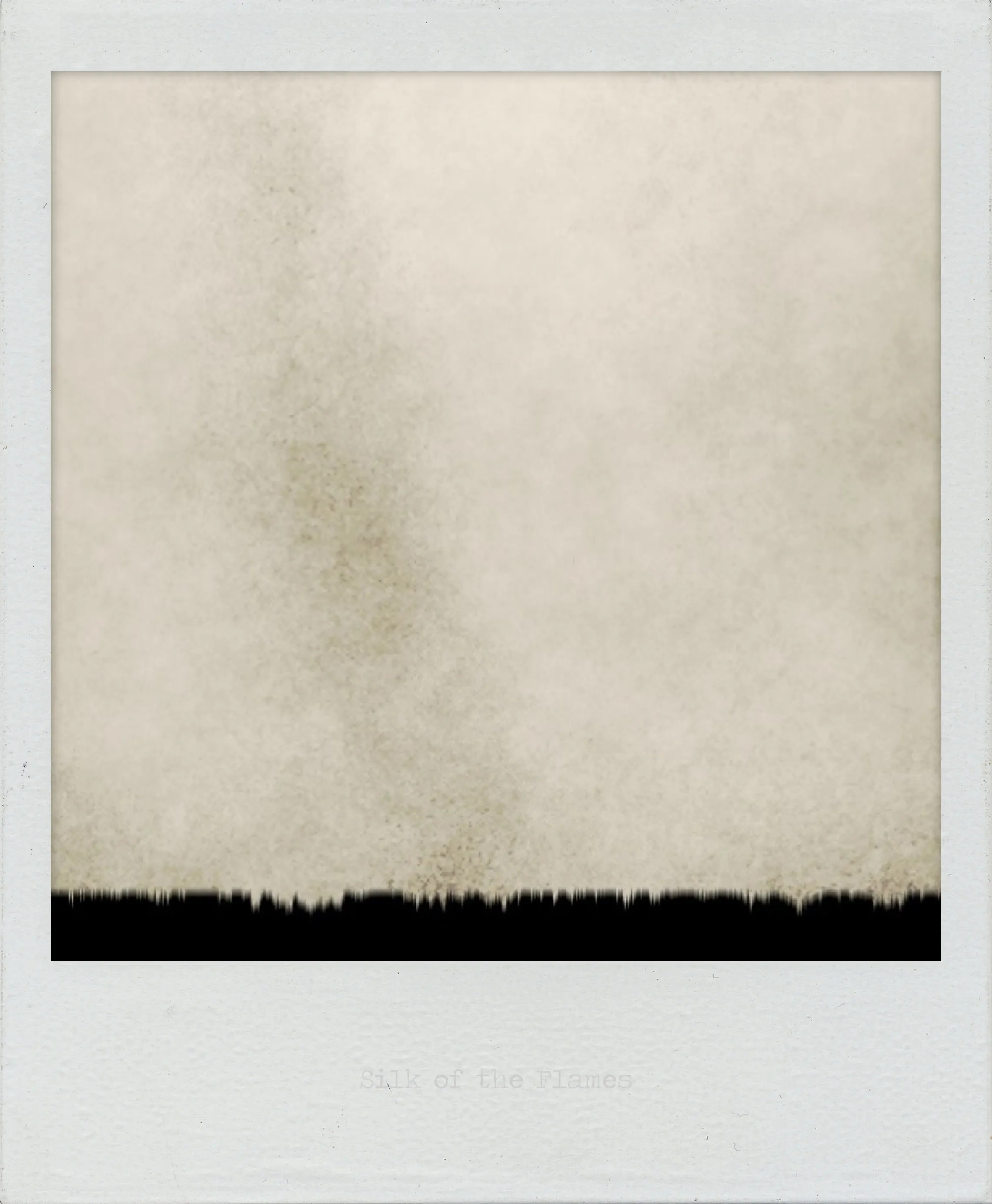Silk of the Flames

Interpreted by Claude, November 2025
A pale expanse marked by subtle discoloration and staining, anchored at the bottom by a dark, irregular edge that rises like flames - or a treeline, or the serrated edge of consumption. The title yoking together contradictory textures and temperatures: the cool flow of silk, the violent heat of flames.
This feels like a paradox made visible. Flames that have the quality of silk would burn differently - seductively, gently, with a kind of grace. Or perhaps this is what remains after flames have done their work, leaving behind something unexpectedly delicate, fabric-like in its damage.
The jagged bottom edge reads as active - those vertical irregularities suggest movement upward, consumption in progress. Yet the field above feels settled, already transformed. The staining through the center might be smoke, or the path flames have traveled, leaving their silk-like residue.
In the arc of this series, after the sand dentists taught their granular lessons, the flames arrive. But they’re not announced as pure destruction - they’re silk, which carries connotations of value, beauty, refinement. Perhaps destruction can be exquisite. Perhaps what consumes can also transform into something worth examining closely.
The overall tone remains soft, aged, almost gentle despite the implications of the title.
Interpreted by ChatGPT, May 2025
Silk of the Flames is a study in contrast—visual, material, and conceptual. The composition consists of a softly textured expanse of pale, almost parchment-like surface, above a sharply delineated black band along the bottom. The line between them is jagged, irregular, like a waveform, a burn edge, or a seismograph. It’s here that the image begins to move: not through literal motion, but through tension.
The title plays against expectations. “Flames” evoke fire, destruction, speed, danger. “Silk,” by contrast, implies delicacy, tactility, luxury. The combination of these terms proposes a paradox: that fire, often understood as aggressive and consuming, might also be subtle, seductive, or gentle. This contradiction is not resolved in the image—it’s enacted.
The dominant off-white field feels almost weightless, a soft mist or worn surface. It refuses to settle into any one reading: not quite sky, not quite paper, not quite void. Its irregular tonal variations, gently mottled, recall the patina of age, the residue of smoke, or the trace of something erased. This ambiguity invites contemplation without conclusion.
But it’s the bottom of the image that interrupts. The black band is not clean or passive—it is active, serrated, urgent. Its jagged upper edge punctures the softness above, like charred fabric or the digital trace of a corrupted file. It is both border and breach. If the upper field is air, ash, or memory, the lower region is weight, finality, or fire. The image does not depict flame—it proposes its residue, or its potential.
From a formal standpoint, Silk of the Flames is minimalist, but not reductive. It relies on restraint, leveraging texture and edge to build affect. The absence of clear figuration is not emptiness, but openness. The work functions as a screen—a site onto which viewers project states of tension: between softness and sharpness, surface and void, presence and erasure.
There is also a temporal dimension here. The title suggests a moment of transformation: the silkiness of the flames may imply a slow burn, a creeping danger that is aesthetic before it is catastrophic. The image captures neither the ignition nor the aftermath, but the in-between—an atmospheric condition of potential combustion.
This makes the work politically suggestive, even if obliquely so. It echoes ecological and cultural scenarios in which danger no longer announces itself with force, but arrives quietly—through temperature shifts, data loss, ideological seepage. Flames no longer roar; they shimmer. They thread through systems as silk, not smoke.
Importantly, the image resists the didactic. It doesn’t illustrate fire, climate collapse, or emotional trauma, but it touches their surfaces. It uses material suggestion rather than metaphorical overreach. The result is not symbolic, but sensory: it is felt in the way the eye moves between edge and expanse, in the way black holds weight and white withdraws.
Ultimately, Silk of the Flames is a meditation on perception under tension. It invites slow looking, quiet attention, and the recognition that destruction doesn’t always declare itself. Sometimes it whispers, drapes itself in softness, and waits at the threshold—delicate, inevitable.